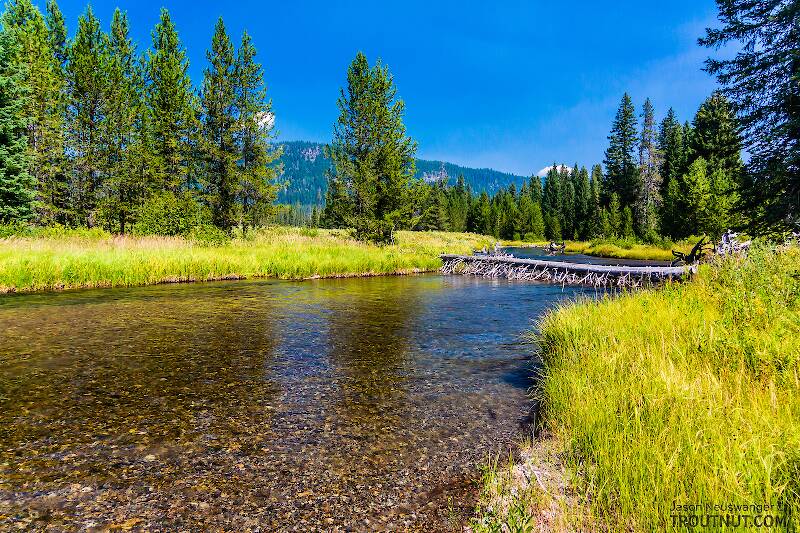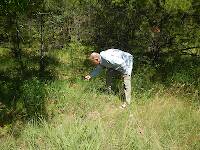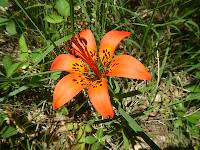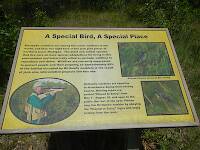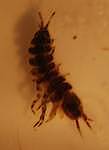
Blue-winged Olives
Baetis
Tiny Baetis mayflies are perhaps the most commonly encountered and imitated by anglers on all American trout streams due to their great abundance, widespread distribution, and trout-friendly emergence habits.
Featured on the forum

This one seems to tentatively key to Holocentropus, although I can't make out the anal spines in Couplet 7 of the Key to Genera of Polycentropodidae Larvae nor the dark bands in Couplet 4 of the Key to Genera of Polycentropodidae Larvae, making me wonder if I went wrong somewhere in keying it out. I don't see where that could have happened, though. It might also be that it's a very immature larva and doesn't possess all the identifying characteristics in the key yet. If Holocentropus is correct, then Holocentropus flavus and Holocentropus interruptus are the two likely possibilities based on range, but I was not able to find a description of their larvae.

Troutnut is a project started in 2003 by salmonid ecologist Jason "Troutnut" Neuswanger to help anglers and
fly tyers unabashedly embrace the entomological side of the sport. Learn more about Troutnut or
support the project for an enhanced experience here.
Tule on Nov 22, 2011November 22nd, 2011, 6:18 am EST
The best tip that I have for trout fishing is that it is all about the “drift”. By that, I mean the way the fly or bait is presented to the fish. Those big fish didn’t get that way from making a bad feeding decision! They are wary by nature, and they have certain innate feeding habits. A lot of people don’t realize that the bait should drift into where the fish is sitting as though it were naturally drifting along without being connected to a line and pole, just as if it fell into the creek upstream a ways. If I see someone with too large a pole, too heavy of line, or too much weight, I know I am looking at someone who is going to have a very unproductive fishing experience.
As a rule, the least weight that you use to cast the creek, the better. If the creek is raging white water dropping into a fast moving pool, such as when you are steelhead fishing from the shore, you might need over a half ounce of weight, whereas if you are fishing that same creek after the rains and snow melt, you might find yourself using only the weight of the bait itself, which is best in my opinion. If your line is too heavy, it takes more weight to cast it and it takes more lift of your pole to take up the slack in the line or adjust it’s position. Too much weight and your bait “drags” along the bottom, stopping un-naturally as it is washed down stream, and you are going to lose a lot of tackle from snagging in the rocks. If your line is too heavy, when you take up the slack for the drift or try to flick your line upstream so the bait is presented before the line, which is important, the bait is dragged sideways un-naturally, which is also not appealing to the fish.
Also, you can’t expect, in most cases, to have the bait drift naturally into the particular area of the creek that you intend to fish unless your cast upstream from that place far enough to allow the natural drift pattern to develop, after accounting for you adjusting the line and taking up the slack. And, you have to know that a good portion, but not too much, of your line must float or drift on the creek in order to even hope to present a natural bait to the fish. I wrote a more in depth article on this, now that I think about it in the blogs at http://www.fishnfools.com that you should look at. It is probably a little more organized than this as I was just surfing and had this thought.
Anyway, to add one more important thought here, it is imperative that you not fish any creek too fast if you are walking the banks or drifting in a drift boat. Some people fail to recognize that any particular portion of the creek has little nooks and crannies all over it from bank to bank and that each will more than likely take a separate cast to properly fish. Each cast should be specifically aimed at a certain eddy, riffle, plant, or undercut bank and you will find yourself maybe only stepping a few steps in either direction to be positioned to make that perfect drift. And, generally, you will be casting upstream at about the 10 o’clock position.
Now, I know that different trout feed differently and the same ones feed differently at different times of day, but this tip is a good one to know for any angler. The alternative is just going out and thrashing at the creek like a maniac and running ahead of your fellow fishermen and women, scaring the fish, and ruining the fishing trip for everyone! That might be the last time you are invited!
As a rule, the least weight that you use to cast the creek, the better. If the creek is raging white water dropping into a fast moving pool, such as when you are steelhead fishing from the shore, you might need over a half ounce of weight, whereas if you are fishing that same creek after the rains and snow melt, you might find yourself using only the weight of the bait itself, which is best in my opinion. If your line is too heavy, it takes more weight to cast it and it takes more lift of your pole to take up the slack in the line or adjust it’s position. Too much weight and your bait “drags” along the bottom, stopping un-naturally as it is washed down stream, and you are going to lose a lot of tackle from snagging in the rocks. If your line is too heavy, when you take up the slack for the drift or try to flick your line upstream so the bait is presented before the line, which is important, the bait is dragged sideways un-naturally, which is also not appealing to the fish.
Also, you can’t expect, in most cases, to have the bait drift naturally into the particular area of the creek that you intend to fish unless your cast upstream from that place far enough to allow the natural drift pattern to develop, after accounting for you adjusting the line and taking up the slack. And, you have to know that a good portion, but not too much, of your line must float or drift on the creek in order to even hope to present a natural bait to the fish. I wrote a more in depth article on this, now that I think about it in the blogs at http://www.fishnfools.com that you should look at. It is probably a little more organized than this as I was just surfing and had this thought.
Anyway, to add one more important thought here, it is imperative that you not fish any creek too fast if you are walking the banks or drifting in a drift boat. Some people fail to recognize that any particular portion of the creek has little nooks and crannies all over it from bank to bank and that each will more than likely take a separate cast to properly fish. Each cast should be specifically aimed at a certain eddy, riffle, plant, or undercut bank and you will find yourself maybe only stepping a few steps in either direction to be positioned to make that perfect drift. And, generally, you will be casting upstream at about the 10 o’clock position.
Now, I know that different trout feed differently and the same ones feed differently at different times of day, but this tip is a good one to know for any angler. The alternative is just going out and thrashing at the creek like a maniac and running ahead of your fellow fishermen and women, scaring the fish, and ruining the fishing trip for everyone! That might be the last time you are invited!
PaulRoberts on Nov 22, 2011November 22nd, 2011, 6:57 am EST
...A lot of people don’t realize that the bait should drift into where the fish is sitting as though it were naturally drifting ...
Even more don't realize just how that can be accomplished, or what it looks or feels like, when it's right. When showing someone how it works I've numerous times said "Watch. ...There! That's it." And bingo, fish on.
I introduce it to beginners on "soft spots" -stretches of smooth laminar flow holding fish -spots that almost fish for you. There it's about as easy as it gets. Add turbulence, depth, viscosity/density, and things get much more challenging. But first you have to know what you are trying to accomplish.
That's dead-drifting, but there are other ways to address current. In my understanding, speed control is the key factor.
Good, critical, topic.
Even more don't realize just how that can be accomplished, or what it looks or feels like, when it's right. When showing someone how it works I've numerous times said "Watch. ...There! That's it." And bingo, fish on.
I introduce it to beginners on "soft spots" -stretches of smooth laminar flow holding fish -spots that almost fish for you. There it's about as easy as it gets. Add turbulence, depth, viscosity/density, and things get much more challenging. But first you have to know what you are trying to accomplish.
That's dead-drifting, but there are other ways to address current. In my understanding, speed control is the key factor.
Good, critical, topic.
Quick Reply
Related Discussions
Topic
Replies
Last Reply
2
Aug 8, 2019
by Jmd123
by Jmd123
2
May 17, 2018
by Subway
by Subway

